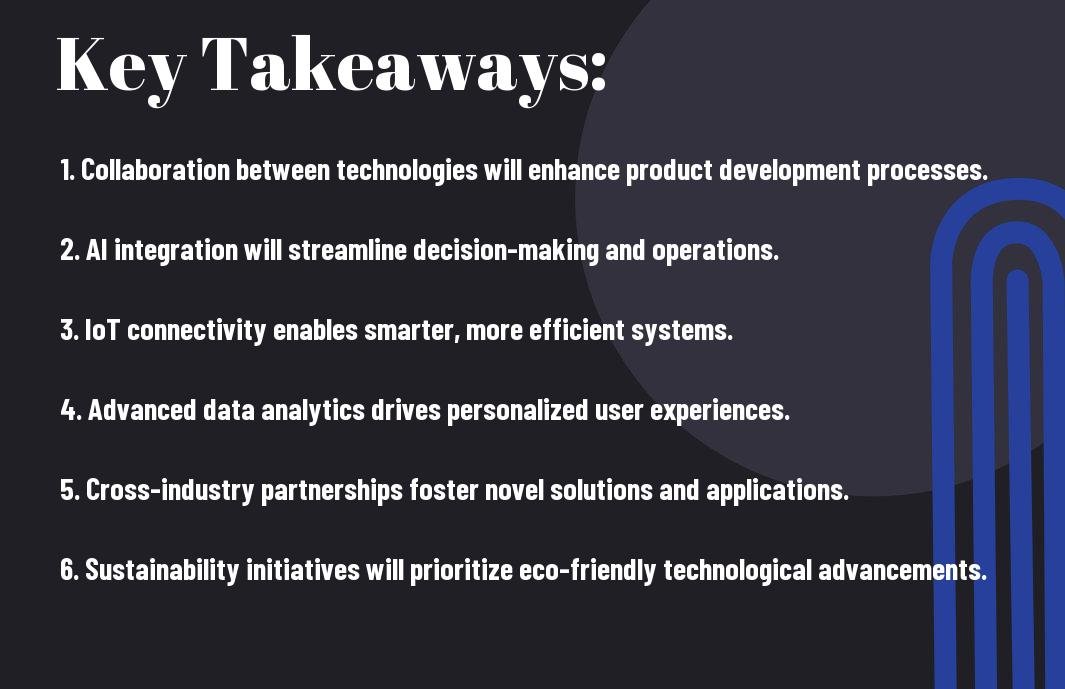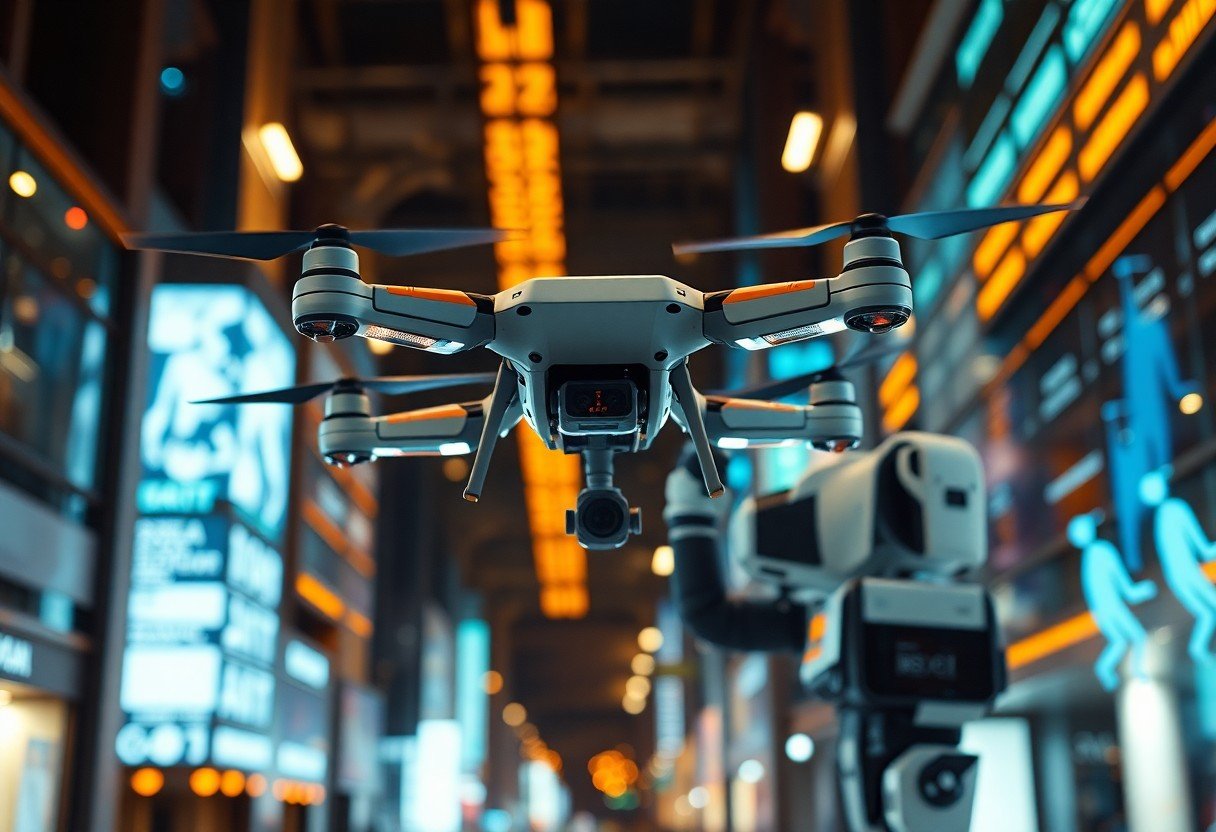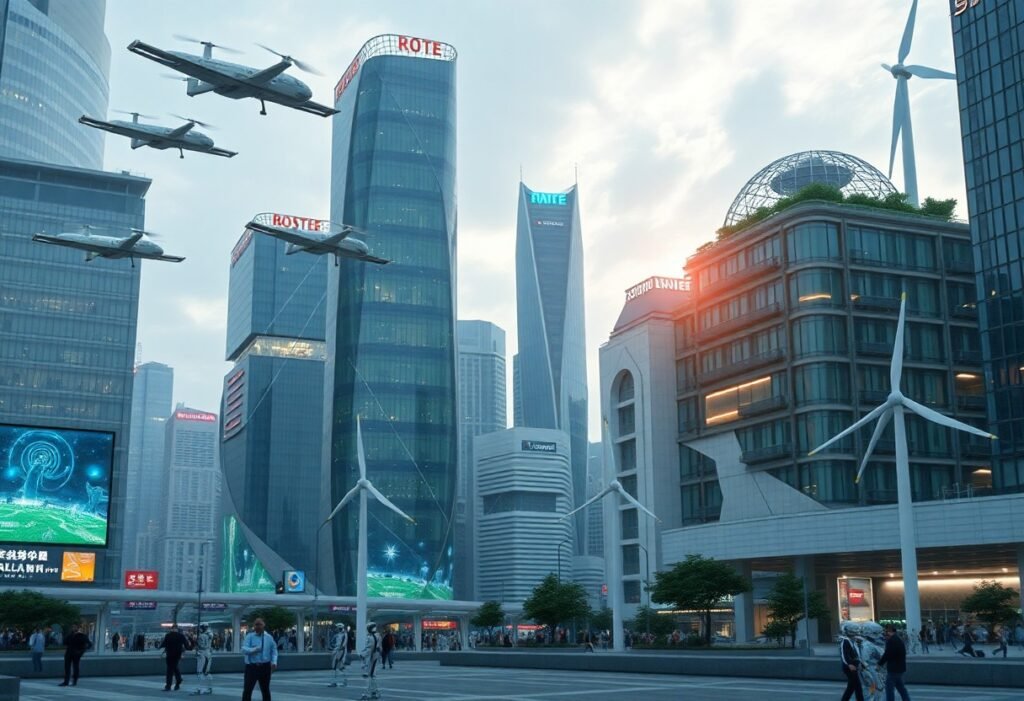Many industries are on the brink of unprecedented transformation, driven by the powerful synergy of emerging technologies. As you look ahead to 2025, understanding how technologies like artificial intelligence, blockchain, and the Internet of Things are converging will be key to unlocking innovative solutions. This synergy not only enhances efficiency but also creates new pathways for creativity and collaboration. In this post, you will explore how these combined technologies hold the potential to revolutionize your field and reshape the landscape of innovation.

Understanding Technological Synergy
The concept of technological synergy involves the collaboration and integration of different technologies to create enhanced solutions and innovative advancements. As you explore this intriguing idea, you’ll discover how combining various technologies can lead to breakthroughs that single technologies alone could not achieve. Understanding this synergy is key to recognizing its potential impact on future innovations.
Definition and Importance
With the rapid evolution of technology, synergy plays a vital role in creating more efficient and effective solutions. It means harnessing the strengths of multiple technologies to produce outcomes that exceed the capabilities of individual components. By grasping this concept, you can better appreciate the interconnected landscape of innovations on the horizon.
Historical Examples of Synergy
About historical instances of technological synergy, you can find compelling examples where combined technologies have led to transformative outcomes. These collaborations demonstrate how the integration of diverse technological elements generates significant advancements that reshape industries and society.
Synergy in history showcases remarkable achievements, such as the fusion of the internet and mobile technology, which revolutionized communication and connectivity. Another example is the collaboration between robotics and artificial intelligence, resulting in smarter automation solutions. These historical instances illustrate the power of merging different technologies, paving the way for future innovations that will undoubtedly shape your world in the coming years.
Key Technologies Driving Synergy in 2025
You will witness an unprecedented integration of technologies in 2025, which will ultimately shape the future of innovation. Cutting-edge advancements in sectors such as artificial intelligence, machine learning, and the Internet of Things will foster collaboration and create new opportunities for growth. To explore this transformative landscape, check out Meet the 2025 Engage Homeland and National Security 100 driving innovation forward.
Artificial Intelligence and Machine Learning
Artificial intelligence and machine learning continue to evolve, becoming the backbone of countless applications by 2025. These technologies will enhance decision-making, automate processes, and drive efficiency across various industries. As AI systems become more sophisticated, you can anticipate a significant impact on how organizations harness data for strategic purposes.
Internet of Things (IoT) and Connectivity
For your business to thrive in 2025, embracing the Internet of Things (IoT) will be vital. This interconnected ecosystem will enable seamless communication between devices, enhancing efficiency, and providing real-time data for improved decision-making. Your ability to harness this technology will lead to innovative solutions that drive growth and productivity.
In fact, as IoT devices proliferate, they will create a rich landscape of data opportunities. By leveraging this network, you can optimize operations, monitor assets in real-time, and develop predictive analytics that inform your strategies. Seamless connectivity will empower you to respond dynamically to market needs and elevate your business to new heights.
Impacts of Technological Synergy on Industries
Keep an eye on how technological synergy disrupts traditional industries by fostering collaboration among emerging technologies. In 2025, expect to see enhanced efficiency, reduced costs, and innovative solutions across various sectors, as organizations leverage interconnected technologies to streamline processes, improve product offerings, and create unique consumer experiences. This transformation will not only reshape industry standards but also redefine competitive landscapes, offering new opportunities for growth.
Healthcare Innovations
With advancements in data analytics, AI, and telemedicine, healthcare will undergo a significant transformation by 2025. These technologies will enable you to access personalized treatment plans and timely diagnostic tools, enhancing patient outcomes. The synergy created by integrating these innovations will lead to improved patient care delivery, streamlined operations, and more efficient management of healthcare resources.
Advancements in Manufacturing
Any evolution in manufacturing driven by technological synergy will revolutionize production processes, making them smarter and more adaptable. By embracing automation, robotics, and IoT, you can anticipate higher levels of precision, reduced waste, and faster turnaround times. This will empower you to create customized products while maintaining cost-effectiveness.
Another significant trend in advancements in manufacturing is the rise of smart factories, where interconnected machines communicate in real-time, optimizing workflows. By leveraging data analytics, predictive maintenance, and advanced robotics, you will benefit from increased operational efficiency and the ability to respond swiftly to market demands. This shift will not only enhance productivity but also support sustainability efforts through reduced resource consumption, allowing you to contribute to a greener future for the industry.

Societal Implications of Synergistic Technologies
After adopting synergistic technologies, you will likely observe significant shifts in social dynamics. Enhanced communication tools, automation, and data integration can redefine how communities interact and collaborate. As society becomes more interconnected through these innovations, you will face both opportunities and challenges, reinforcing the need for adaptability as you navigate a rapidly changing landscape. Understanding how these technologies impact your community and personal relationships will be necessary for cultivating a positive future.
Workforce Transformation
Workforce dynamics will undergo notable changes as synergistic technologies emerge. As automation and artificial intelligence enhance productivity, you may find new job categories evolving, requiring adaptability and willingness to learn. Emphasis will be placed on upskilling, allowing you to thrive in an increasingly tech-driven environment while fostering a culture of innovation within your organization.
Ethical Considerations
Against the backdrop of technological advancements, ethical considerations will become increasingly important as they influence your personal and professional life. Transparency, fairness, and responsibility need to be balanced with the potential benefits of synergy. Engaging in discussions around these themes will be vital in shaping a framework for responsible innovation that prioritizes humanity’s best interests.
Societal implications of ethical considerations surrounding synergistic technologies cannot be overlooked. You will have to navigate the complexities of data privacy, potential job displacement, and power dynamics that may arise as technology reshapes industries. Addressing these concerns requires you to adopt ethical frameworks that promote equity and inclusivity. By participating in conversations about responsible technology use, you contribute to societal betterment and nurture a future where technological growth aligns with human values.

Case Studies of Successful Synergy
Now, consider some exemplary case studies that demonstrate the power of technological synergy:
- 1. Tesla and SolarCity: Combined energy solutions leading to a 30% increase in renewable energy usage.
- 2. Apple and IBM: Enterprise mobility solutions that drove a 50% increase in business app deployments within two years.
- 3. Microsoft and LinkedIn: Enhanced productivity tools resulting in a 25% growth in user engagement.
- 4. Google and DeepMind: AI advancements that improved healthcare diagnostics accuracy by over 30%.
- 5. Amazon and Whole Foods: Streamlined supply chains leading to a 20% reduction in food waste.
Notable Companies Leading the Charge
Along with these examples, several notable companies are paving the way for future innovations through their synergistic efforts. For instance, IBM consistently focuses on integrating AI with cloud computing, which has significantly enhanced its service offerings. Companies like Adobe, which combines creativity tools with AI features, have also set benchmarks for innovation.
Startups Innovating with Synergy
Among new players, startups are harnessing technological synergy to create groundbreaking solutions. By merging different technologies, these startups are positioning themselves as innovators in their respective fields.
Innovating with synergy involves combining various tech disciplines to drive forward-thinking solutions. Companies like Loom.ai are utilizing AI for facial recognition while integrating AR capabilities to enhance user experiences. Similarly, Oura Ring leverages data analytics and wearable technology to provide users with health insights that were previously unattainable. The collaborative efforts among these startups signify a shift towards a more integrated technological landscape, offering you a glimpse into the future of innovation.
Anticipated Challenges and Solutions
All technological advancements come with their set of challenges. As we move toward 2025, organizations must anticipate obstacles such as integration hurdles across diverse systems and the paramount need for data privacy and security. Adapting to these challenges will require innovative solutions and a strategic approach. For insights into emerging technology trends, check out Gartner’s 2025 Strategic Technology Trends Are Just Right.
Overcoming Integration Barriers
By leveraging standardized protocols and open-source platforms, you can efficiently overcome integration barriers. This approach ensures that different technologies seamlessly connect, maximizing data usage across your organization. Engaging in cross-functional teams during the implementation of new systems can foster collaboration and promote a better understanding of the unique needs within your environment.
Ensuring Data Privacy and Security
Anticipated advancements will also raise concerns regarding data privacy and security as more devices become interconnected. It’s important for you to prioritize safeguarding sensitive information while navigating the complexities of modern technology. This involves implementing robust security measures and staying compliant with evolving regulations to maintain trust and integrity.
And as data breaches become increasingly common, employing solutions like end-to-end encryption and regular security audits is vital for protecting your organization. You must also educate your team on best practices and the importance of vigilance when handling data. By creating a culture of security, you can not only prevent potential threats but also empower your workforce to act responsibly in an increasingly digital landscape.
Final Words
Presently, you stand on the brink of a technological revolution where synergy between various technologies will redefine innovation by 2025. By harnessing the power of artificial intelligence, IoT, and blockchain, you can expect to see unprecedented levels of collaboration and efficiency across sectors. As you embrace these advancements, your capacity to innovate and create sustainable solutions will only expand, ultimately transforming your approach to problem-solving and progress. The future is a collaborative one, and your active participation will determine the pace and nature of these innovations.









